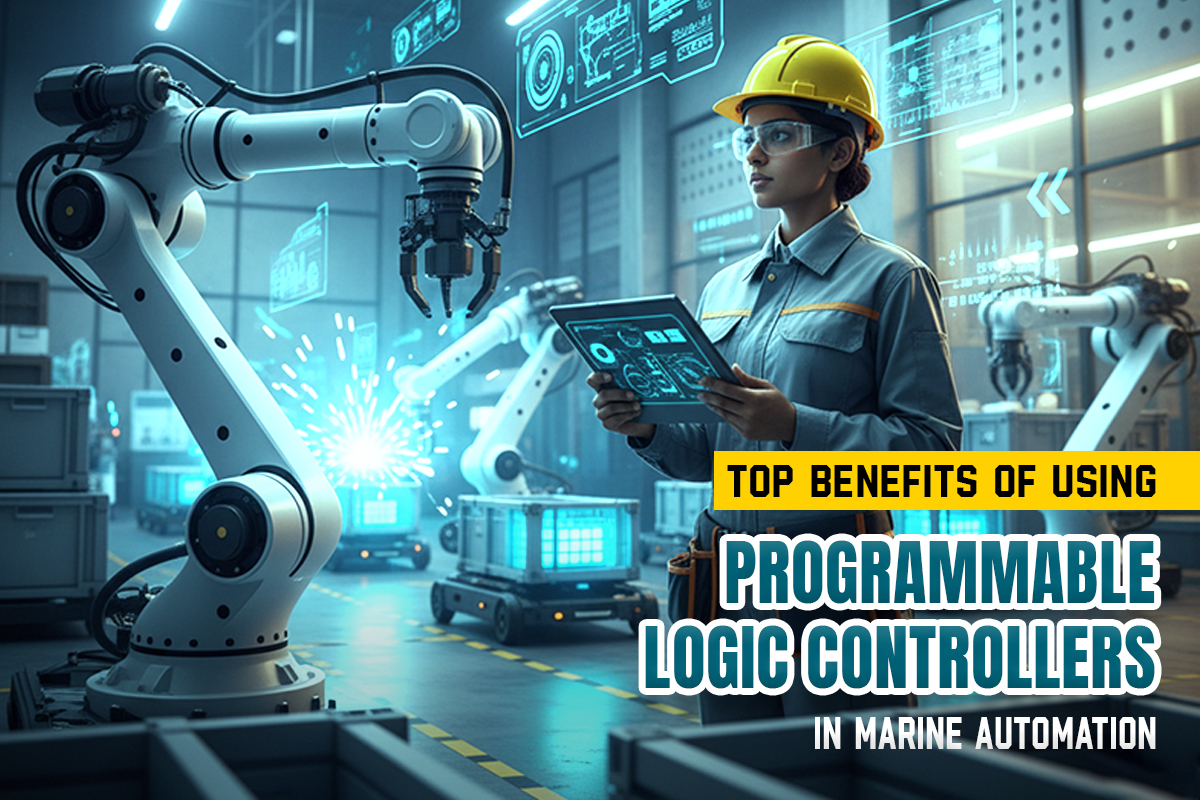What is a Programmable Logic Controller?
A Programmable Logic Controller is an industrial computer that is used to automate electromechanical operations. Unlike computers, PLCs are constructed to function in rugged environments and therefore perfectly suit marine automation systems where vibration, humidity, and varying temperatures are the norm.
In maritime applications, PLCs are coded to track inputs (such as sensors), process information, and initiate outputs (such as alarms, motors, or valves). From steering systems to fuel control, to ballast regulation, PLCs provide smooth and effective operation.
Advantages
1. Increased Reliability in Harsh Environments
Maritime environments are capricious—saltwater corrosion, vibrations, and humidity damage traditional control systems.
PLCs are designed with rugged enclosures and sealed housings that withstand these challenges. Their fault-tolerant design and rugged hardware provide constant running, even under harsh environments.
Why it matters: Minimized downtime and enhanced safety for vital shipboard systems.
2. Real-Time Monitoring and Control
Ships rely on accuracy and rapid decision-making. PLCs enable real-time monitoring, where engineers can monitor data from sensors and react instantly to changes in the system.
Whether it’s calibrating fuel ratios or keeping propulsion in balance, PLCs provide precise control and quicker response than manual operation.
Example: An engine management system controlled by a PLC can sense abnormal temperature increase and initiate cooling or shutdown to avoid failure.
3. Flexibility and Simple Reprogramming
In contrast to conventional hardwired logic circuits, PLCs are software-controlled, and so engineers can easily change or update control logic without altering hardware.
Such flexibility is important in ships where equipment updates or new safety regulations frequently necessitate rapid configuration adjustments.
Benefit: Avoid wasting time and expense during retrofits or regulatory changes.
4. Integration with Contemporary Marine Systems
PLCs integrate elegantly with Human Machine Interfaces (HMIs), Supervisory Control and Data Acquisition (SCADA) systems, and Industrial IoT platforms.
Such integration enables controlling several systems—such as navigation, ballast, engine, and alarm monitoring—on one screen.
Result: Enhanced visibility, automation, and decision-making throughout the vessel.
5. Enhanced Safety and Alarm Management
Safety is a top priority on any ship. PLCs constantly monitor numerous sensors and initiate alarms when there are abnormal conditions—high pressure, fuel leaks, or low oil levels, for example.
They also facilitate automated emergency responses, such as engine shutdown or activation of fire suppressants.
Takeaway: PLCs are the ship’s “watchdog,” preventing small problems from becoming catastrophic accidents.
6. Cost Savings and Low Maintenance
While PLCs do have an upfront cost, their long-term payback is well worth the investment.
They’re energy-saving, minimize human labor, and are low-maintenance with their hardy components and built-in diagnostics.
In marina automation, where downtime is equivalent to lost business, PLCs offer superb ROI through fewer failures and more efficient operation.
7. Energy Efficiency and Environmental Compliance
New-generation PLCs are built to enable ships to comply with IMO (International Maritime Organization) and MARPOL regulations. They save fuel and lower emissions through accurate control of engines, pumps, and compressors.
Automatic load balancing and real-time energy management, for instance, enable ships to become more environmentally friendly at a lower operational cost.
8. Remote Access and Diagnostics
Modern PLC systems frequently enable remote monitoring and diagnostics over secure networks. Engineers can monitor performance, resolve faults, or execute program updates-even when the ship is underway.
Benefit: Shorter time to resolve issues, reduced onboard service calls, and improved operational continuity.
Applications
PLCs are applied in a broad variety of marine automation systems, such as:
| Marine System | Function |
|---|---|
| Engine Control System | Monitors speed, temperature, and pressure |
| Ballast Water System | Maintains ship stability and compliance |
| Power Management System (PMS) | Balances load between generators |
| Fire Detection & Safety Systems | Automates alarms and suppression |
| Steering and Navigation Systems | Ensures precise control |
| HVAC and Lighting Systems | Manages energy-efficient operations |
These uses show how PLCs impinge on every vital aspect of marine automation.
Why PLCs Are the Future of Marine Automation?
Marine business is moving toward smart ships and digitalized fleets with automation, IoT, and data analytics powering the performance. PLCs will be at the center of such evolution since they provide:
- Modular scalability for future modernization
- Cybersecurity functionalities for securing threats
- Predictive maintenance when coupled with AI and IoT
With smarter ships emerging, PLCs will remain as the core nervous system integrating all key subsystems.
Related Categories You Can Explore
For more detailed insight and related marine automation components, view these categories:
